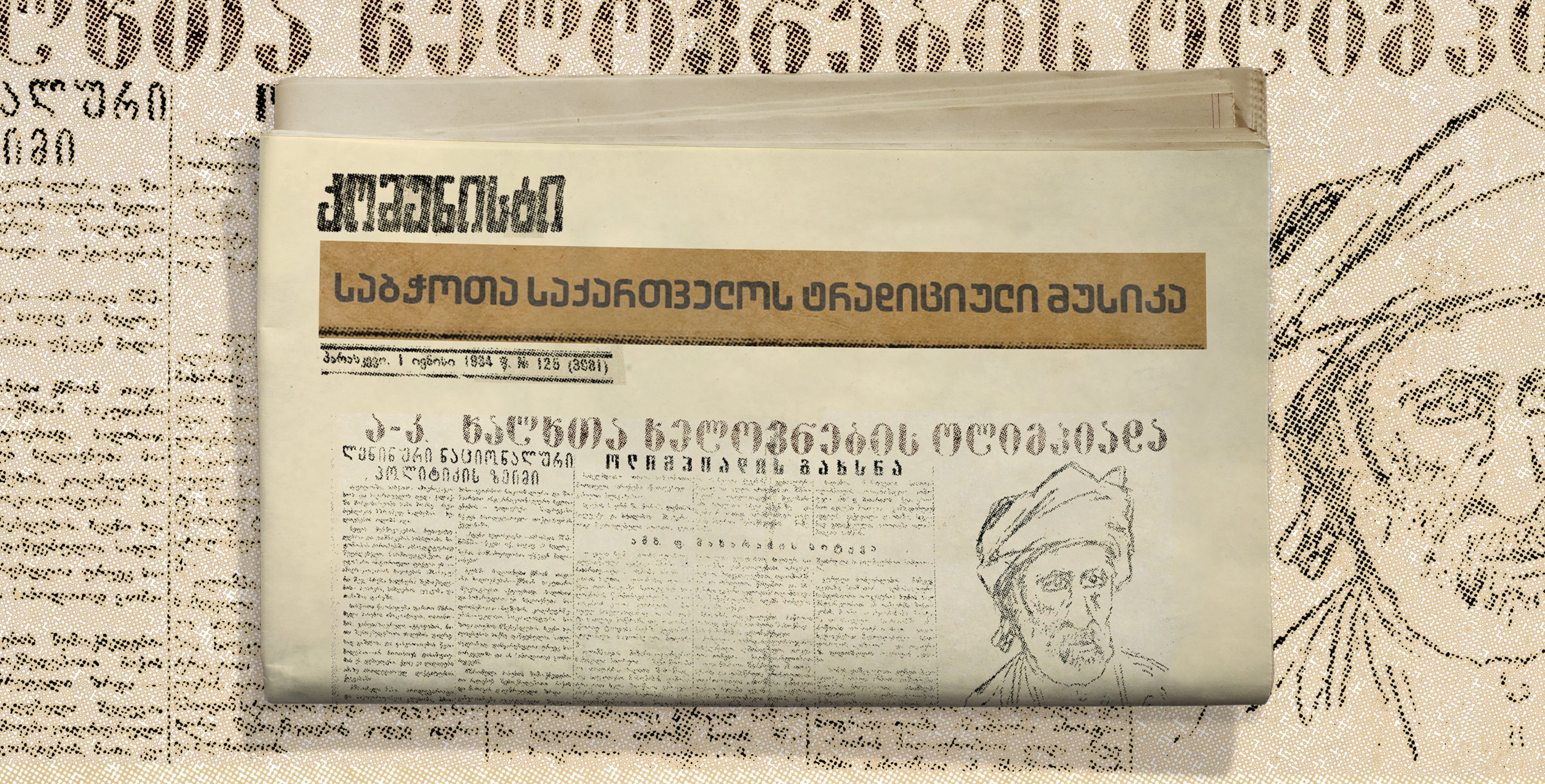Letter from the Editors #4
Welcome! As we wrap up the year 2023, we present to you another issue of Georgian Folklore. While working on this issue, we have once again tried to select diverse and interesting topics to offer you. At the same time, we have made an effort to introduce more young authors interested in researching folklore.
The articles published in the fourth issue cover Georgian traditional music and church chanting, the oral tradition, ethnography, applied arts, musical dialects, folk instruments, and world cultural heritage.
In the section dedicated to Georgian folk songs, Sandro Natadze examines the naduri (specifically, qanuri) songs spread in Guria, Adjara and Imereti, through the lens of seventeen characteristic features of ancient polyphony proposed by the famous Georgian ethnomusicologist Joseph Jordania. Sandro demonstrates how all the features of ancient polyphony are revealed in these songs. The article turns our attention not only to the characteristics of naduri songs, but also to the important work and theories of Joseph Jordania.
The peculiarities of Kakhetian song performance are the main topic of Beka Bidzinashvili's article. Beka’s research interests are based on his practical experience as a choir master and singer. In the article, presented in the section on Georgian musical dialects, the author focuses on the melismas characteristic of the Kakhetian musical dialect. He presents different variants of ornaments and inflections and supports his own hypotheses with interesting explanations from his interlocutors, who are themselves outstanding performers of the Kakhetian songs.
The next article is dedicated to the singer Simon Pirtskhalava, also known as Simona Kuti, who worked in Kvemo Imereti in the nineteenth Century. The author is Beso Makhatadze, a young researcher of the church chanting tradition. Beso describes the history of St. George’s school in Khoni and the chanting school there during the period of tsarist Russia. He provides us with interesting details about Simon Pirtskhalava and his disciples, who were also chanters working in Imereti. To construct this narrative from two centuries ago, the author employs largely unknown archival materials, in addition to published sources.
Ana Ivanashvili, a PhD student of philology at Tbilisi State University, writes about Amirani, a famous hero of Georgian folk epic. The article tells us of the various stages of the hero’s adventures: birth, baptism, youth, his battles, hubris, and downfall. Given the framework of a short article, she provides us with a clear account of the main features of this incredibly important piece of Georgian oral tradition.
The article that journalist and blogger Nana Sikharulidze offers in the Ethnography column concerns the yard-keepers (meezovebi) of Tbilisi. Drawing from references found in old periodicals, the author tells us little-known, fascinating stories about the meezovebi of Tbilisi, both during the tsarist and Soviet periods. However, she does not limit her exploration to the past and also presents portraits of modern meezovebi, based on personal interviews.
In the column dedicated to the fine and applied arts, art critic Nino Giorgobiani tells us about her family workshop Giorgo Biani and shares her experiences in this endeavor. You will not only learn about the innovative technique of pressing images into brass, but also see the jewelry created by Nino, inspired by traditional Georgian art.
The Folk Instrument section is dedicated to the Ach’aran bagpipes, the ch’iboni. The author of the article, Teona Rukhadze, reconstructs the history of the ch’iboni based on various written sources, tracing the path of the instrument in the twentieth century through the present day. The article is accompanied by audiovisual examples which will help form a clear idea of the ch’iboni even for those who are not yet familiar with this instrument.
The Photo Essay column focuses on on photos from George Balanchine’s 1962 visit to Georgia. Balanchine, perhaps the most famous choreographer in the American ballet, was a member of the famous Balanchivadze family of composers. The journalist and researcher Ilia Tavberidze presents an article that touches on the history of Balanchine’s arrival in his homeland and his meetings with his relatives after many years of separation. This story evokes special emotions. It is impossible not to be moved by the episode in which Balanchine visits the grave of his father, Meliton Balanchivadze, in Kutaisi, the emotions he felt in the Gelati monastery, or the impressions that Gurian song and dance in Ozurgeti left on him.
In our Interview section, the ethnomusicologist Maia Gelashvili spoke with the master of Gurian song, Tristan Sikharulidze, a representative of the Sikharulidze singing family. In an extensive and engaging conversation, they discussed the paths on which life has taken the eighty-five-year-old singer: his childhood, his ancestors, his attitude towards Gurian singing, and his long professional experience.
And as always, this issue did not leave out the readers interested in world cultural heritage, to whom we offer a trip to Kosovo this time. French ethnomusicologist Françoise Arnaud Demir discusses the performance of epic poems by the singer Naxhije Bytyqi, a woman who sings material typically performed by men. The article combines such topics as the recent history of Kosovo, the peculiarities of the country’s traditional music, women’s and men’s repertoires, and the Naxhije Bytyqi’s unique career. Along with interesting stories told in a wonderful narrative style, the article includes exciting musical examples of the singer’s work.
This is what the fourth issue has in store. We hope you find many interesting stories here.
Thank you for your loyalty.
See you soon.
.jpg)



